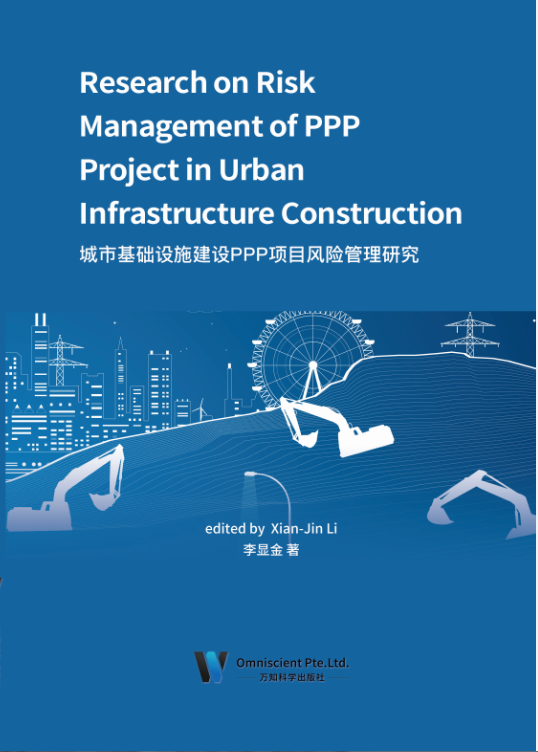
Preface
Urban infrastructure construction is the basis of urban survival and development, the symbol of urban modernization level and the important foundation of national sustainable development. With the rapid development of China’s economy, the contradiction between infrastructure investment demand and government financial infrastructure investment is growing. Multiple investment, public-private cooperation, giving full play to the advantages of the government's public departments and private enterprises, and realizing the “win-win” or “{multi win” PPP mode of social welfare and enterprise economic benefits came into being. As an innovative financing mode to effectively attract private capital and technology, PPP mode has been developing rapidly in China in recent ten years. PPP, as a new project financing mode, risk control is the core issue of project financing. Due to the large number of participants and different preferences for risks, the financing risk allocation agreement is complex. How to effectively allocate the risks among the participants and establish the risk sharing mode framework of Urban Infrastructure PPP projects to guide the reasonable risk sharing and benefit allocation of PPP projects is the key to ensure the success of the project.
Infrastructure plays an important role in national economic and social development. Both developed and developing countries are actively accelerating the construction of public facilities in order to increase national competitiveness. Based on the externality of public facilities, the public sector has traditionally assumed the responsibility of providing public facilities directly. However, in the face of the growing demand for public services, due to the shortage of funds and the lack of long-term and effective management, governments of various countries have turned to rethink the rationality and feasibility of providing infrastructure construction and operation by private sector. Infrastructure has changed from traditional government provision to market supply. BOT, boo, boot, TOT, PFI and other financing modes are playing an increasingly important role in urban infrastructure construction.
Through the cooperation between the government and the private sector, the public-private partnership can jointly develop infrastructure, realize the expected interests of all parties involved, and share the responsibility and financing risk. Because PPP mode can provide public services with higher quality and higher efficiency, it has attracted the attention of theoretical and industrial circles.
The application of PPP model in the world has become a trend. Many countries have established central institutions to manage and coordinate these projects. The World Bank estimates that 40% of total infrastructure investment in developing countries is provided by the private sector. The policy of promoting public construction with PPP mode has become a new way for all countries to compete.
前 言
城市基础设施建设是城市生存和发展的基础,是城市现代化水平的标志,是国家可持续发展的重要基础。 随着我国经济的快速发展,基础设施投资需求与政府财政基础设施投资之间的矛盾日益增长。多元投资,公私合作,发挥政府公共部和民营企业各自的禀赋优势,实现社会福利和企业经济效益的“双赢”或“多赢”的 PPP模式应运而生。 PPP 模式作为一种有效吸引私人资金和技术的创新性融资模式也于近十几年开始在我国迅速发展起来, PPP 作为一种新型的项目融资模式,风险控制是项目融资的核心问题,由于参与方众多,且对风险有不同的偏好,融资风险分配协议复杂,如何将风险在各参与方之间进行有效分配,建立城市基础设施 PPP 项目风险分担的模式框架,以指导 PPP 项目的风险分担和利益分配合理,是确保项目取得成功的关键。
基础设施在国民经济和社会发展中起着重要的作用, 不论是发达国家,还是发展中国家,都积极加速公共设施建设,以期增加国家竞争力。基于公共设施的外部性,传统上,公共部门义无反顾地承担起直接提供公共设施的责任。然而,面对日趋增长的公共服务需求,政府部门由于资金紧缺,缺乏长期而有效的经营管理,各国政府转而重新思考由私营机构参与提供基础设施建设和运营的合理性和可行性。基础设施由传统上的政府提供转向市场供应, BOT、 BOO、 BOOT、 TOT、 PFI 等多种融资模式在城市基础设施建设中发挥出越来越重要的作用。
公私合作模式通过政府与私营部门的合作共同发展基础设施,实现参与各方的预期利益,同时共同承担责任和融资风险。由于 PPP 模式能够提供更高质量、更高效益的公共服务,从而引起了理论界和产业界的高度重视。
PPP 模式在全世界的应用已经成为一种趋势,许多国家已经建立了中央机构来管理和协调这些项目。世界银行估计在发展中国家的基础设施总投资中有 40%是由私营机构提供的。以 PPP 模式推动公共建设的政策,遂成了各国竞相当试的新途径。

Xian-Jin Li, male, the Han nationality, master’s degree, born in Jimo District, Shandong Province. He is now the chairman of the General Contracting Division of Qingjian Group Co., Ltd. He has been engaged in the construction industry for more than 20 years with rich experience. In 2007, he was awarded the title of “Brand Project Manager” of Qingjian Group Co., Ltd. In 2012, he won the honorary title of “The Second Prize of National Engineering Construction Excellent Management Quality Group”. “Analysis of Arch Camber and Deflection of Concrete Structure” has been appraised as the leading level in China by Housing and Urban-Rural Development Department of Shandong Province. She has published “Top-down Construction Method of Rock Soil Combination” and “Formwork Construction Method of Large-span Reinforced Concrete Special-shaped Beam”.
李显金,男,汉族,山东即墨人,硕士研究生。现任青建集团股份公司总承包事业部董事长,从事建筑行业 20 余年,经验丰富。 2007 年获青建集团股份公司“品牌项目经理”称号。 2012 年获得“全国工程建设优秀管理质量小组二等奖”等荣誉称号。“混凝土结构起拱与挠度分析”经山东省住房和城乡建设厅技术鉴定为国内领先水平。发布《岩土结合逆作法施工工法》、《大跨度钢筋混凝土异形梁模板施工工法》等多部工法。